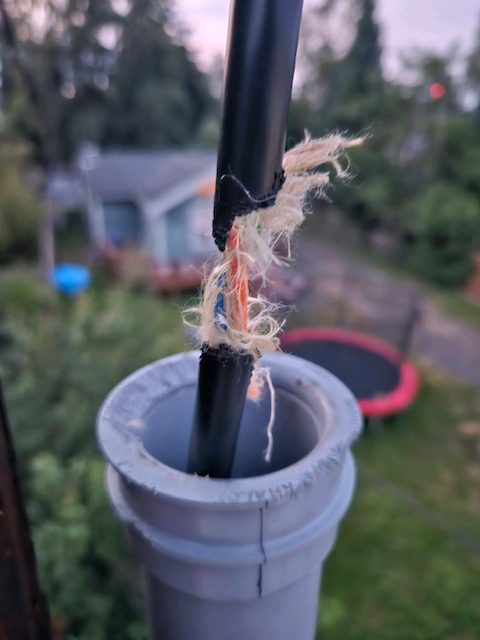Walking a Thin Line – Animals & Power
The PUD has nearly 400 miles of above ground utility line and a growing number of fiber optic cable communication lines county wide—plenty of highwire space for animals to traverse and chew through.

Animal-related outages account for approx. 8% of outages here in Jefferson County and between 5% and 20% of outages nationwide, according to the American Public Power Association. Outages declared “unknown” by the utility (12% of total) are often animal contact as well, with peak animal outage months from May–October. Only trees and vegetation account for a higher percentage of outages annually (35.2%) in our county.
Animal vs line equipment faults totaled 1,148 hours in 2022—a number that fairly low, outage incident wise, compared to other outage types due to built-in protections within the grid itself. For comparison, tree and vegetation contacts accounted for approx. 436,000 customer hours without power.
Critter high wire acts don’t always lead to an outage—in fact, a special set of circumstances must occur with the unfortunate animal contacting both a “hot” line and a nearby ground. The moment contact is made—*ZAP!*—the circuit is interrupted and a fault occurs either at the transformer or a nearby fuse cuts out.
The resulting outage can be localized or broad in scale depending upon where in the system the fault occurred. Substations and larger transmission poles can also be impacted by wildlife, leading to larger outages. Birds can quickly build nests atop high voltage equipment, causing a similar fault to occur, but on a far larger scale.
 Wildlife contact with utility equipment is expensive and, unfortunately, not going away any time soon. The PUD continually trims trees near utility lines, making access more challenging for wildlife and improving grid resiliency.
Wildlife contact with utility equipment is expensive and, unfortunately, not going away any time soon. The PUD continually trims trees near utility lines, making access more challenging for wildlife and improving grid resiliency.